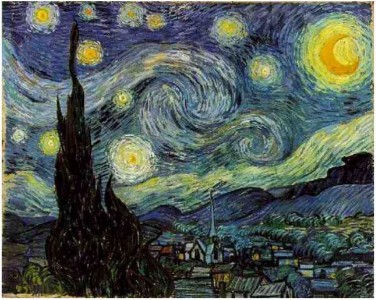7 tips for successfully selling your art online
You know who would have absolutely loved the Internet? Salvador Dalí. No, seriously. That guy was all about self-promotion, and making his presence known in the art world. Heck, in the world at large.
You might not have Dalí’s flair for the dramatic (or his ability to rock a waxed mustache), but what you do have in common is a desire to have your work seen, and a connection made, with art lovers and, more importantly, art buyers. So how do you get the attention of potential art buyers from across the world?
In order to stand the best chance at success when distributing your amazing artwork or showcasing your unique talents, you need to make sure you develop a strong, engaging online experience that brings buyers into the fold and spotlights the benefits of buying from an independent talent like yourself, you little snowflake.
With that said, here are 7 tips for successfully selling your art online.
[caption id=”attachment_486” align=”alignright” width=”376”] via vangoghgallery.com[/caption]
via vangoghgallery.com[/caption]
1. Find a host with the most
As with any website, an artist needs to make sure that his or hers won’t go down due to an unreliable web host, or one that isn’t secure enough for e-commerce (i.e. selling your shizz). You’re going to have to do some research to find hosts that guarantee reliable uptime, security, and customer service. If you want to take stab at building your own website, you should look into leading website builders, and find one that fits your needs and price range.
Also, remember that security is very important – you can’t expect people to fork over their hard-earned cash if there’s the slightest chance their credit card information might not be secure. Check out this primer on SSL certificates for a quick lesson in security.
2. Be master of your domain
Next, you need to secure a domain name that is relevant to your artwork – this is part of finding a host that’s right for you. Pick one that will allow you the domain name of your choosing, one that makes sense, like your first and last name, for example. You want people to find you easily, so making up a rando, inside-jokey domain name is funny, but ultimately will work against your purposes, which is to sell art. So keep it professional. Using the name of your studio: also okay.
3. Keep it about the artwork
We get it – you’re super creative. And as a creative, you want to make sure everything you touch is arty and meaningful and reflects your artistic sensibilities. That’s cool. Howevs: your website isn’t the art, it’s the vehicle that showcases the art.
I’m not saying your website can’t be stylish and beautiful. It can. I’m just saying, don’t get all crazy with mood music and flash images of every piece you’ve ever created, because that can be really annoying, especially if someone has the volume on her computer turned up, and your folksy rendition of “Total Eclipse of the Heart” starts blaring at her. You want to attract customers, not repel them, so keep the focus on your art.
4. Make your work shine
Speaking of attraction, you really want your artwork to shine. But how do you convey all that a piece has to offer in the flat, 2D realm of online browsing? You can’t, really, but you can do the best you can by making sure your artwork looks amazing. That means photos that are in focus, free of glare, and framed perfectly. If you can do this, great. If you’re not a photographer, think about hiring, or working out some kind of trade, with a professional.
And, although you want customers to see every detail in a piece, large images that take forever to load are not the way to go. Keep images reasonably sized so they load quickly, or risk frustrating Big Pockets McGee, who has more money than patience, and will take that money to an art site he can browse through quickly in between meetings with Donald Trump.
Also, and this is important, you want to label each art piece with key pieces of information:
• Name of piece, if there is one
• Dimensions (people need to know how big the piece is)
• Medium (oil, acrylic, bronze, etc.)
• Prices
That last one may not appeal to you, but as with any online shopping, people want the bottom line. Even with art. Some sites will ask you to email the artist about prices, but asking people to take an extra step like that is a mistake. First of all, people are inherently lazy and don’t want to make an extra effort if they don’t have to. Second, emailing the artist feels like a promise of some kind; like, since you’re asking, you intend to buy, and if you decide not to buy, you’re letting him or her down. You don’t want your customers feeling bad. Ever. So don’t make them contact you for prices.
5. Show what's available
Sure, you want to show off every piece you’ve ever created – you’re proud of your work. Who can blame you?
However, people are there to buy, and if all they are seeing is work that is unavailable, or has been sold, they’ll get frustrated and leave. Think about creating a page that’s solely for work that’s already been purchased, just to keep it separate from the stuff that is still available.
6. Talk a bit about yourself
For some artists, a mysterious persona is part of their brand. But unless you’re Banksy, being clear about who you are and what you do is a plus (You very well could be Banksy. Heck, I could be Banksy, for all you know). Go ahead and talk a little about yourself, your inspirations, your accomplishments, but keep it to a few paragraphs. Same with any blurbs you want to include about art pieces: a little bit goes a long way.
7. Be accessible
Again, unless you’re Banksy, you want customers to be able to contact you easily. Your e-commerce site should adequately allow for easy, painless transactions that require no extra contact, but if someone has a question they want to ask you about the art, let them ask it. And be diligent about answering them back as quickly as you can. Art is an emotional thing, and some people may feel a need to know more about a piece, or about you as the artist. Making a connection may lead to making a sale.
Therefore, you should also consider being involved in social media, but only if you have the time. Facebook, Twitter, Instagram and Pinterest are all great ways to connect with potential fans and customers, but only if you’re keeping the accounts actively updated. Do not set up accounts and then immediately forget about them. If people like you enough to want to learn more about you via your Pinterest page, and you’ve pinned three things and never come back, you’re going to have disappointed woulda-been-customers. (For more on how to kick butt on Pinterest, check out this post.)
To sum up, as with any website, you want your e-commerce art site to focus on the product — the art, duh — while making transactions as simple and painless as possible for your customer. If you follow these 7 tips, you’ll be well on your way to successfully selling your art online.
As for becoming the next Dalí, I’m afraid I can’t help you there, homie.




